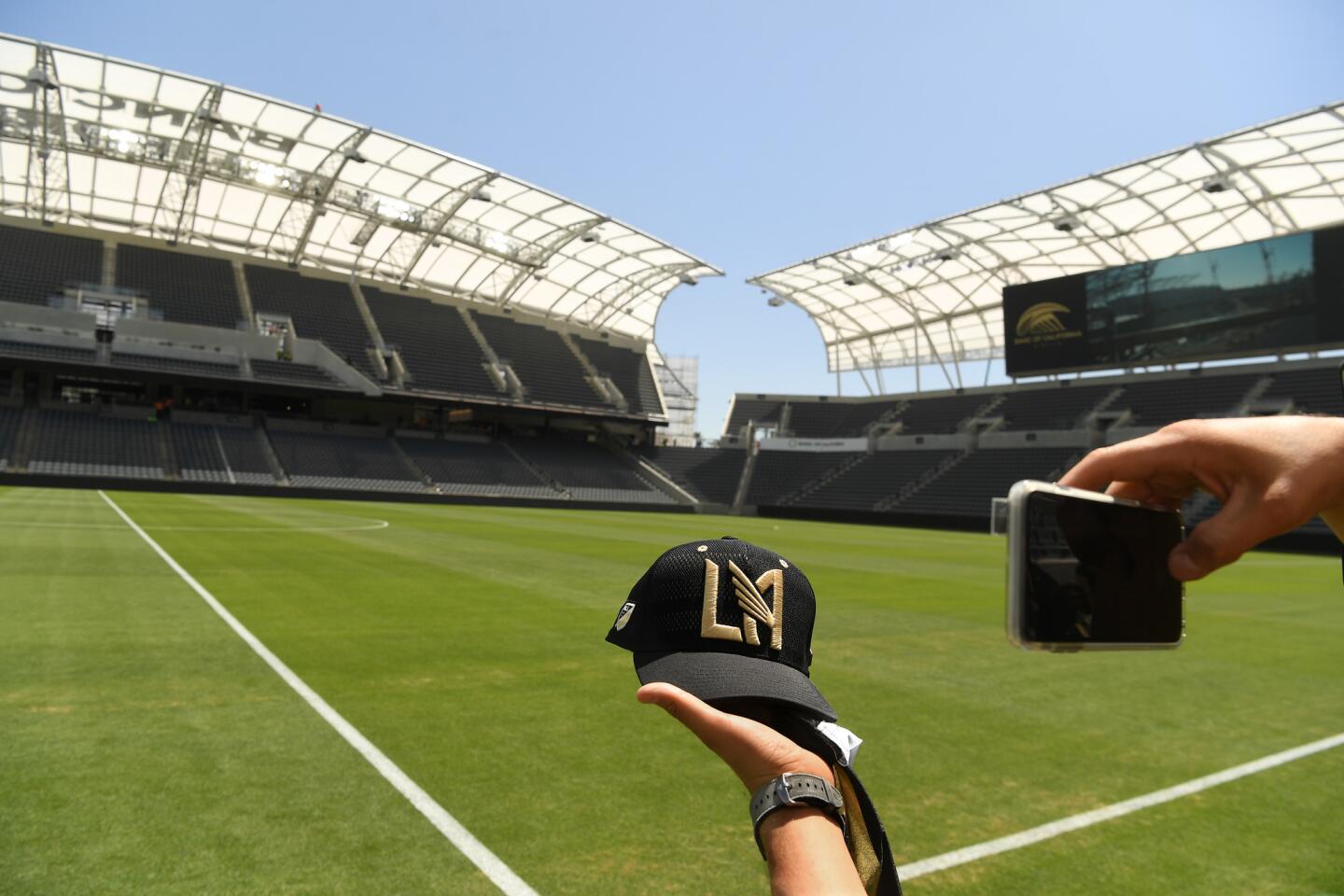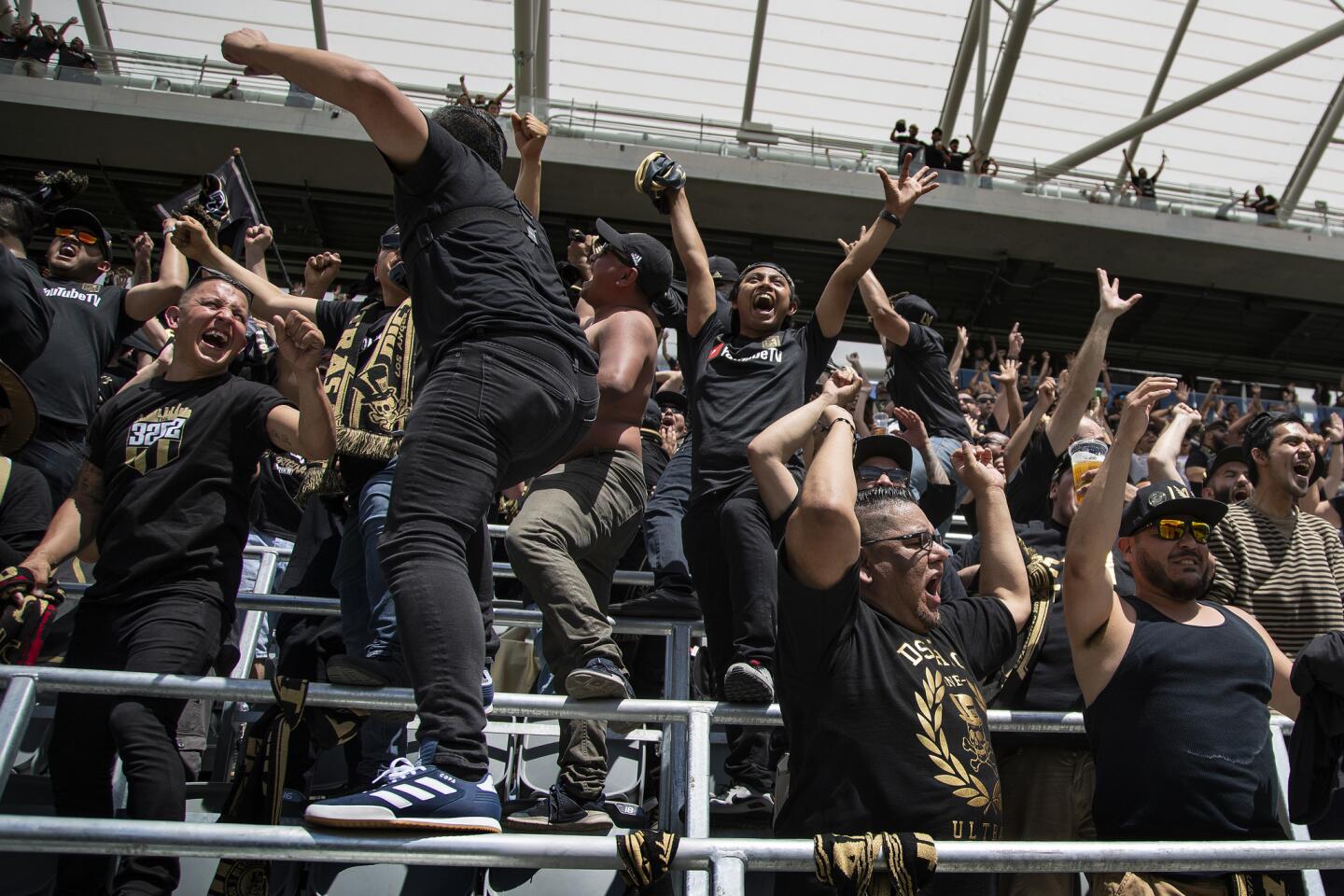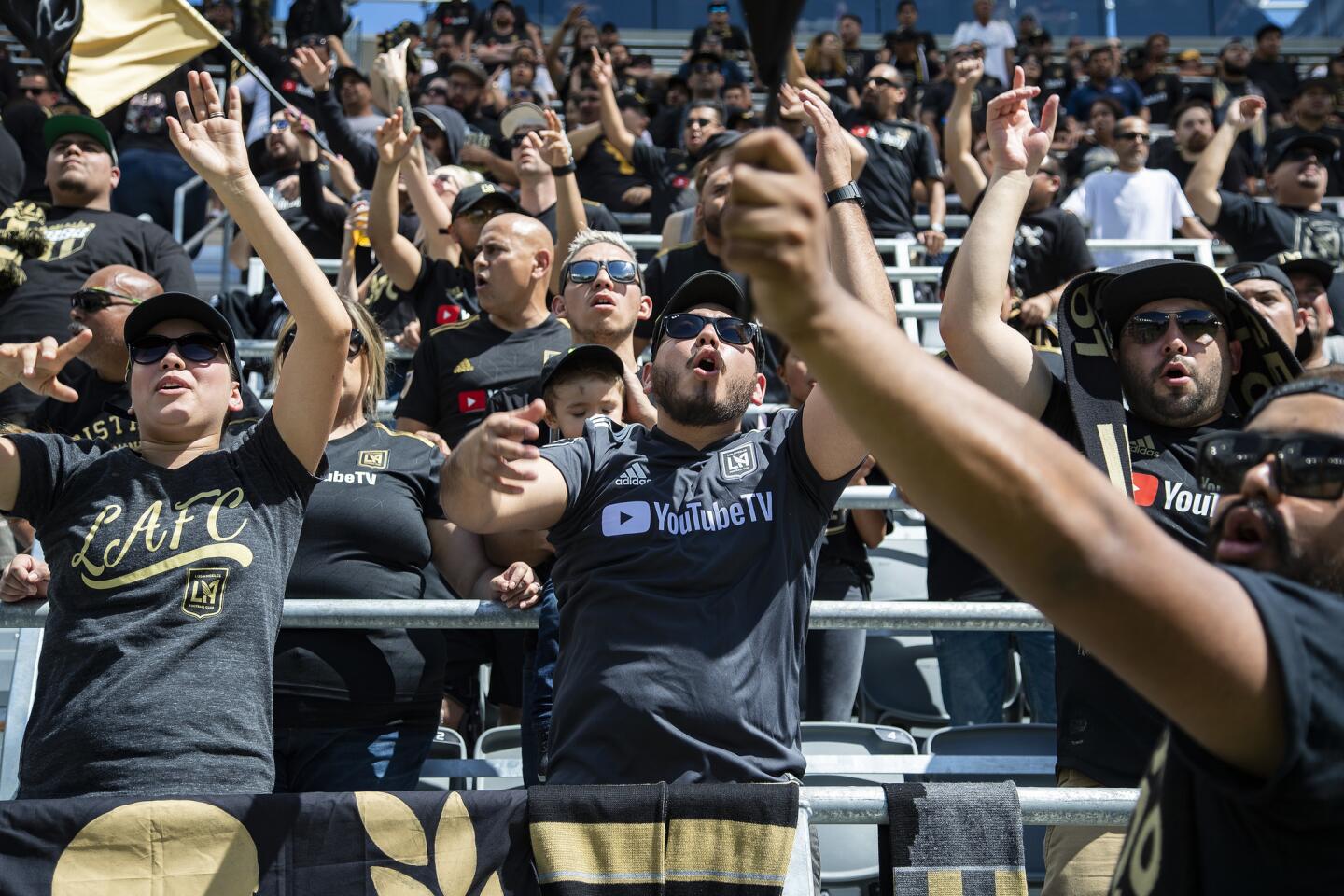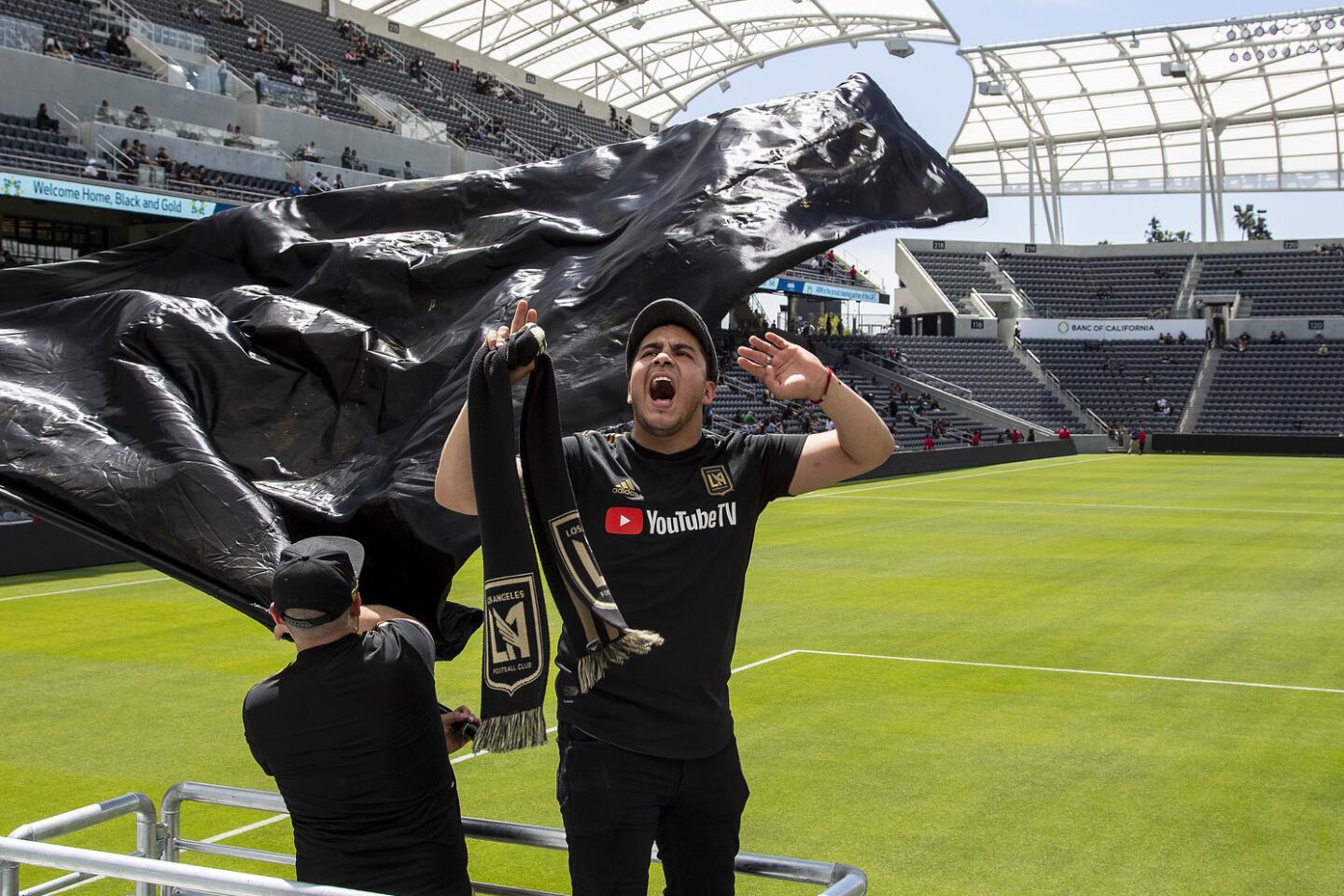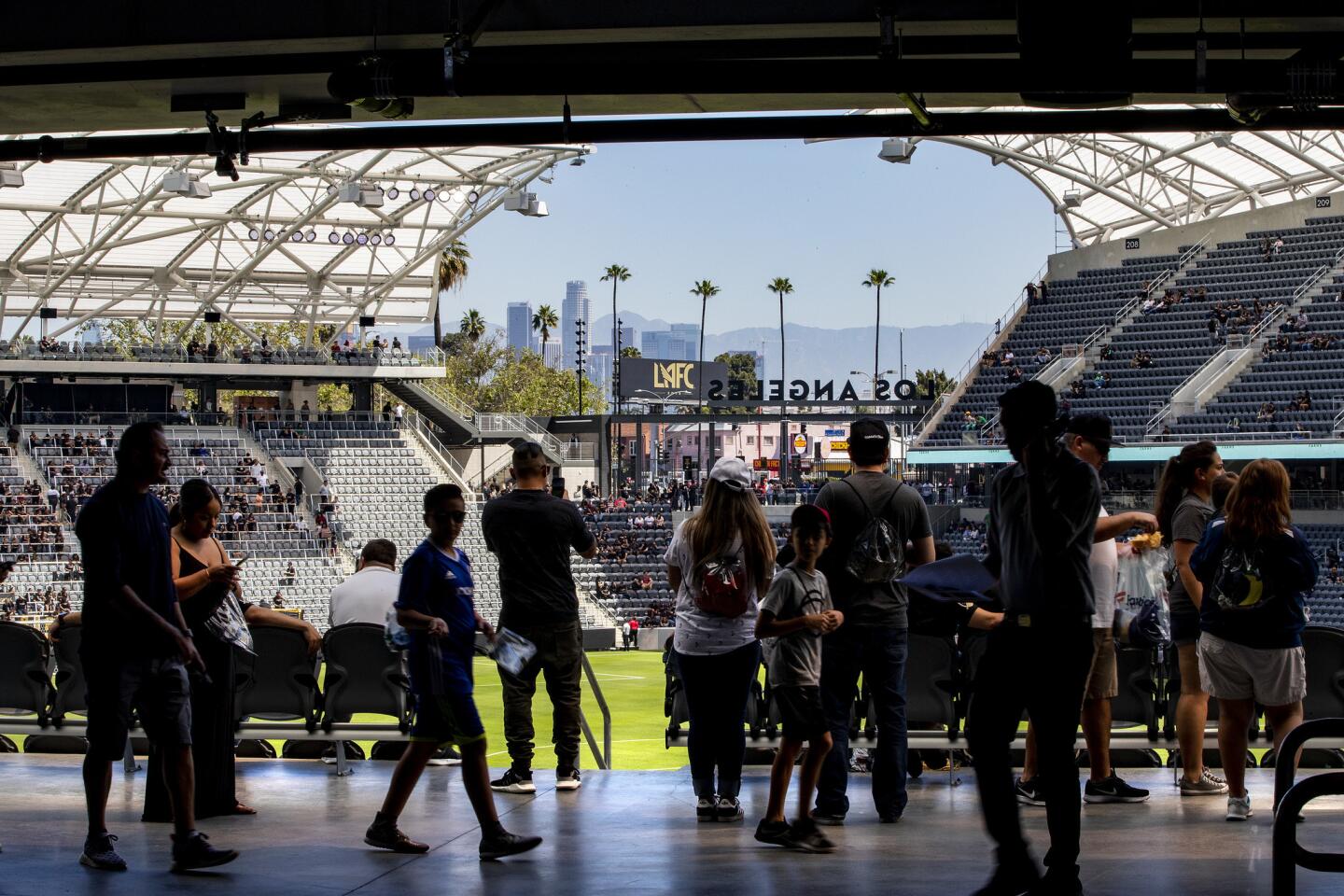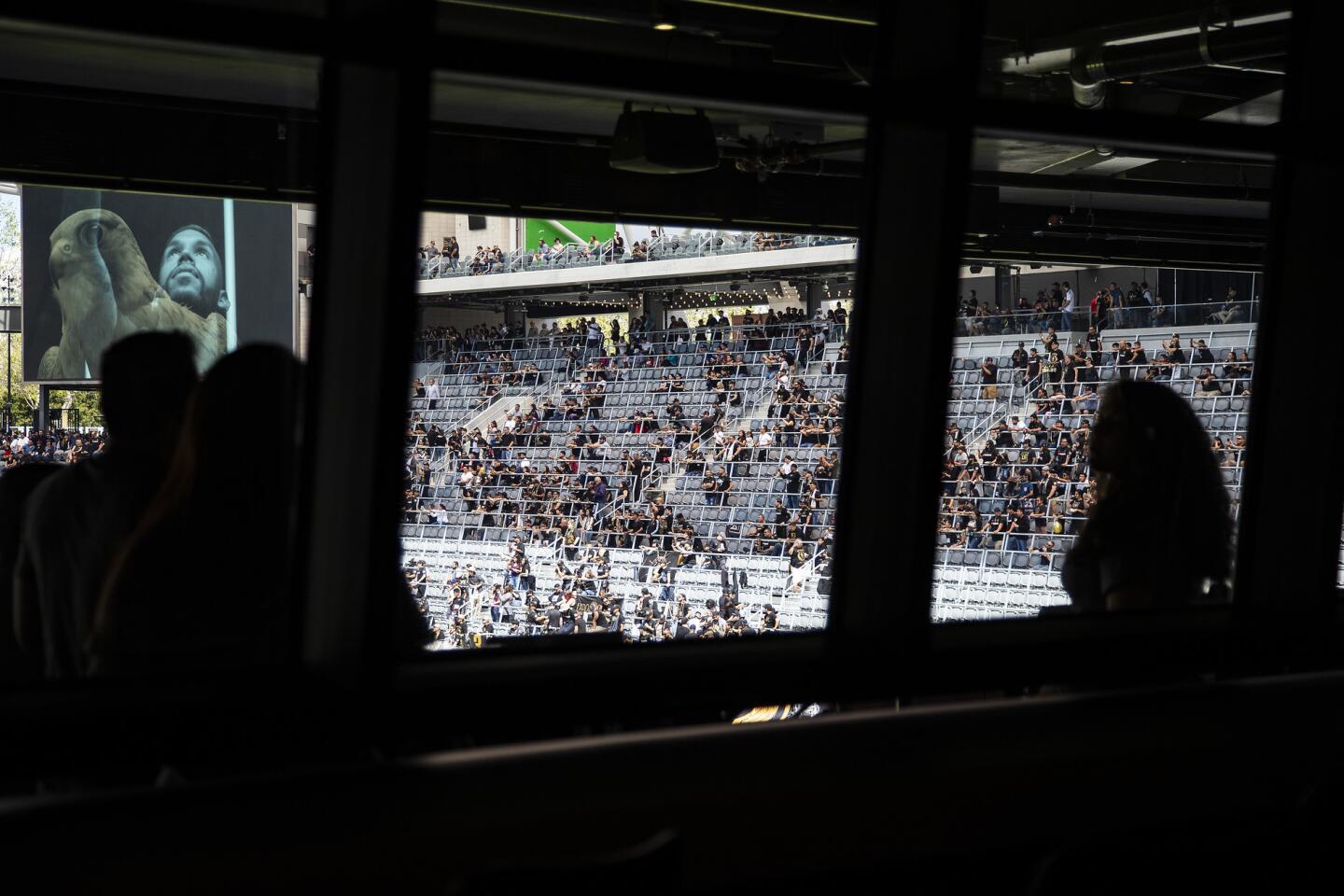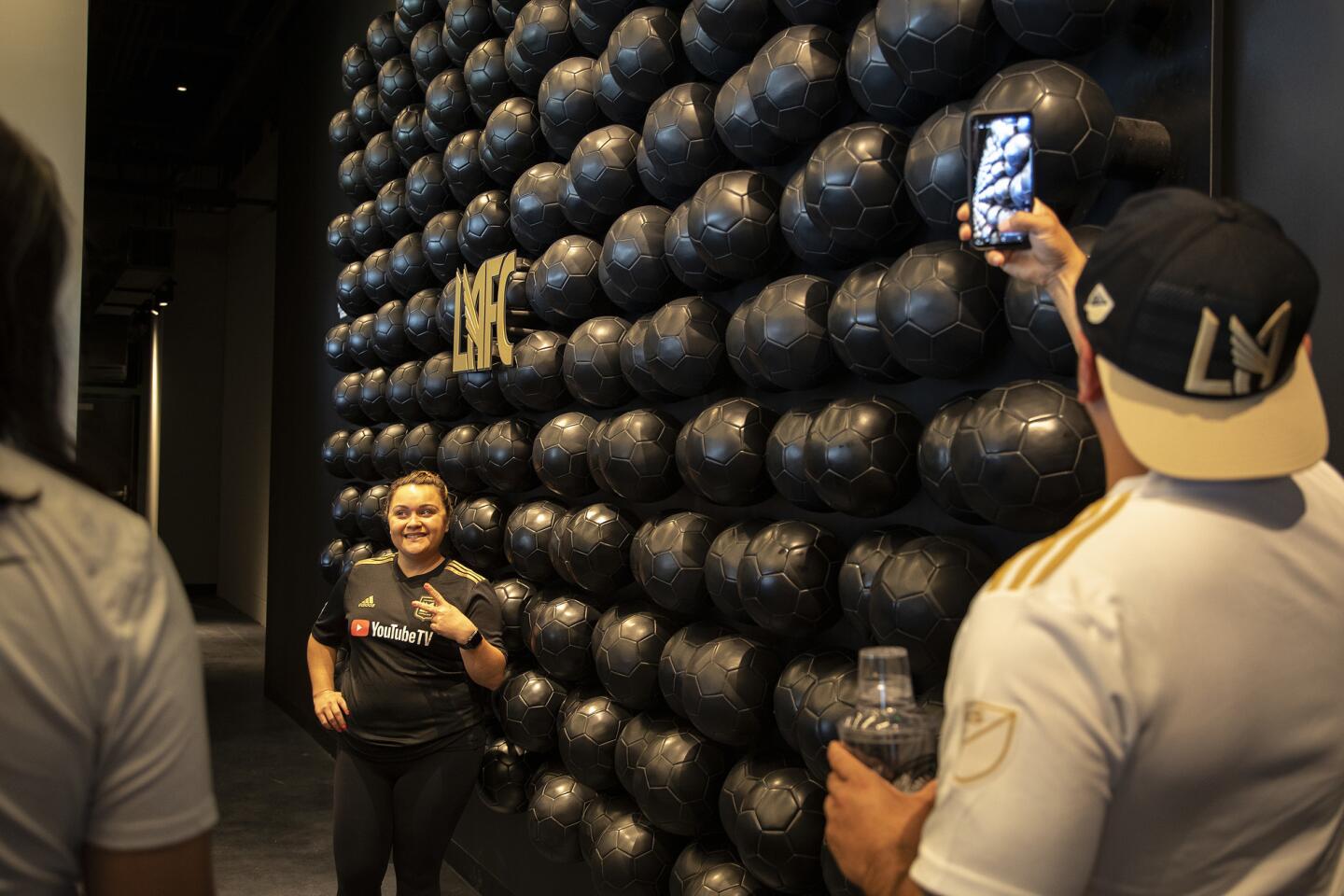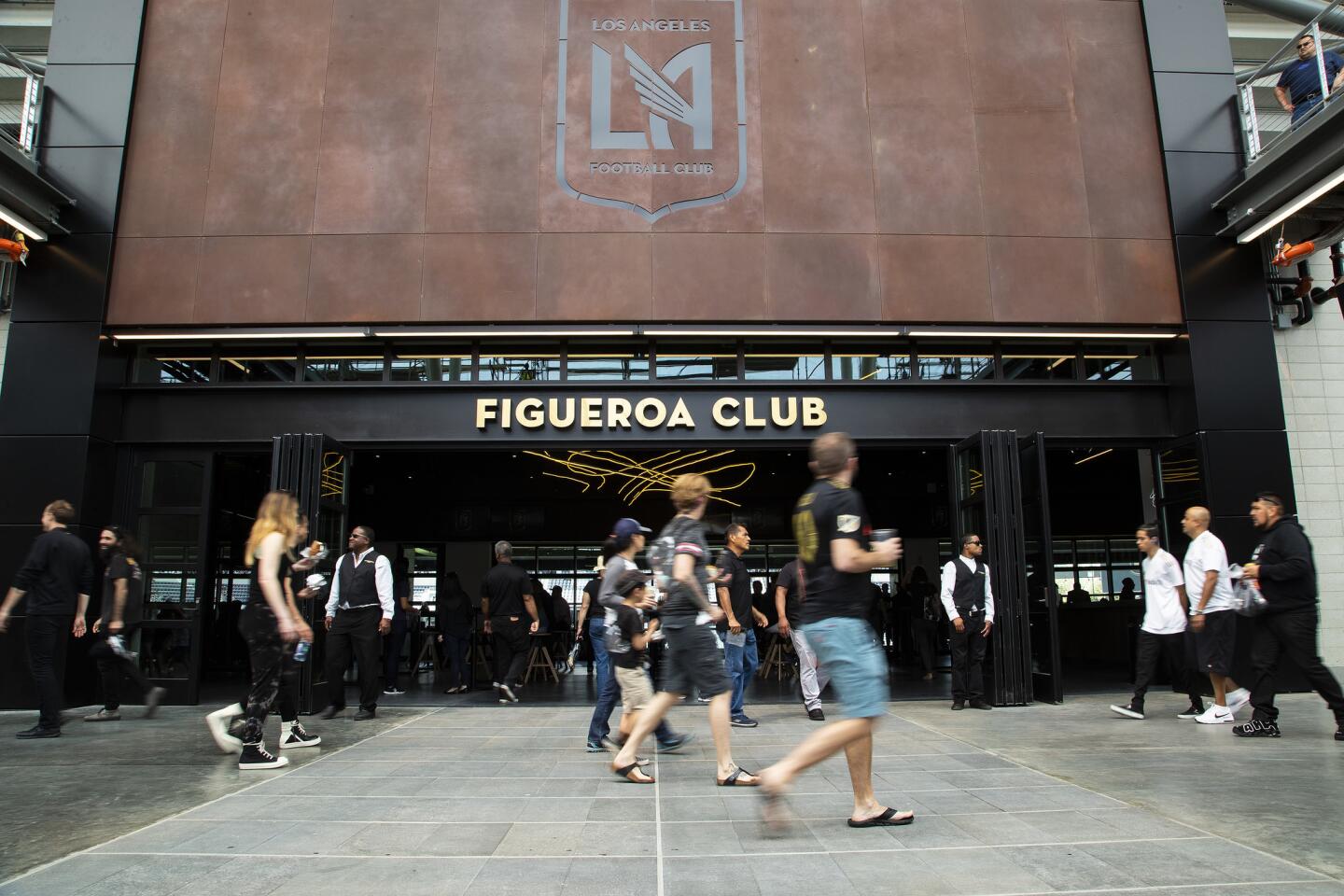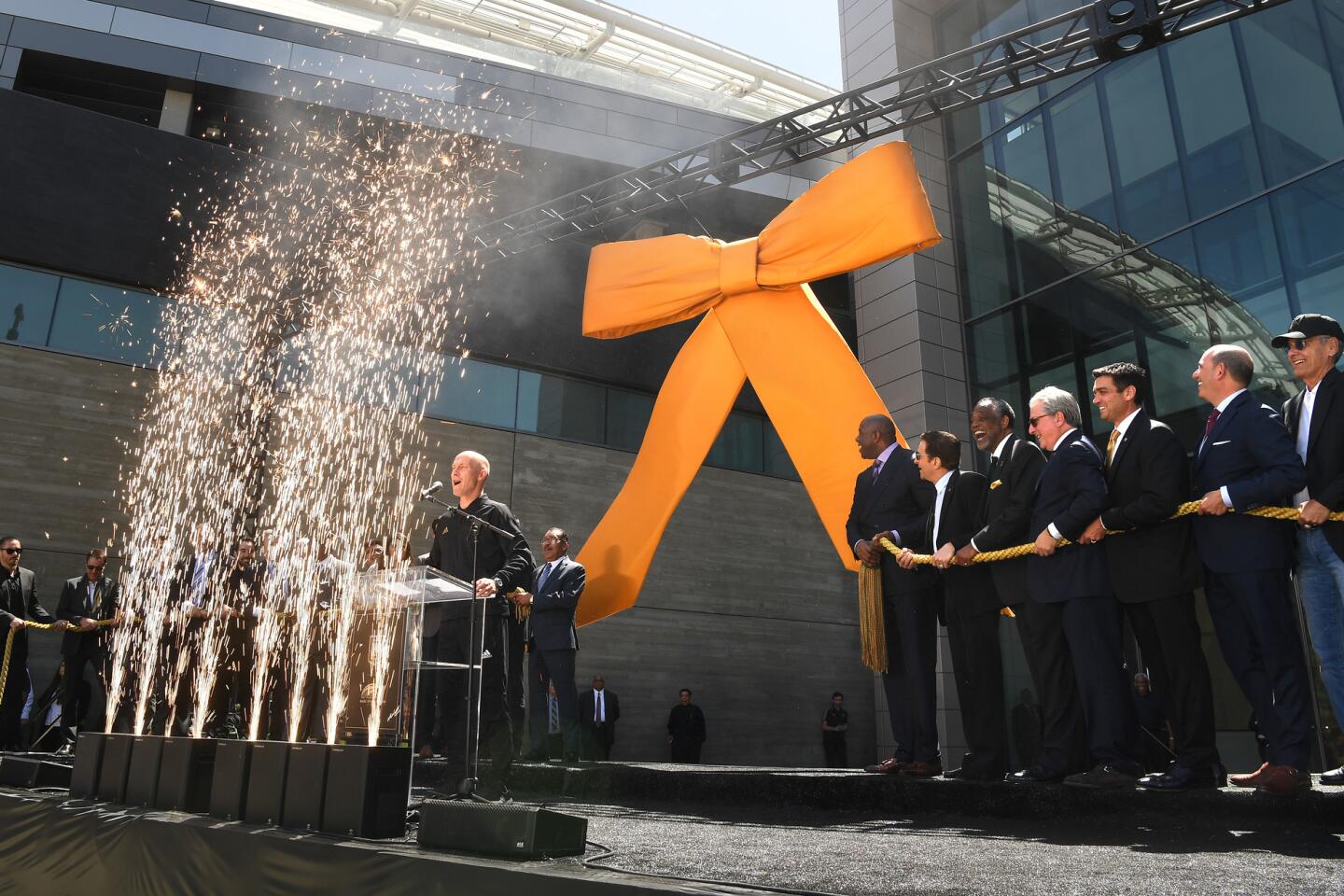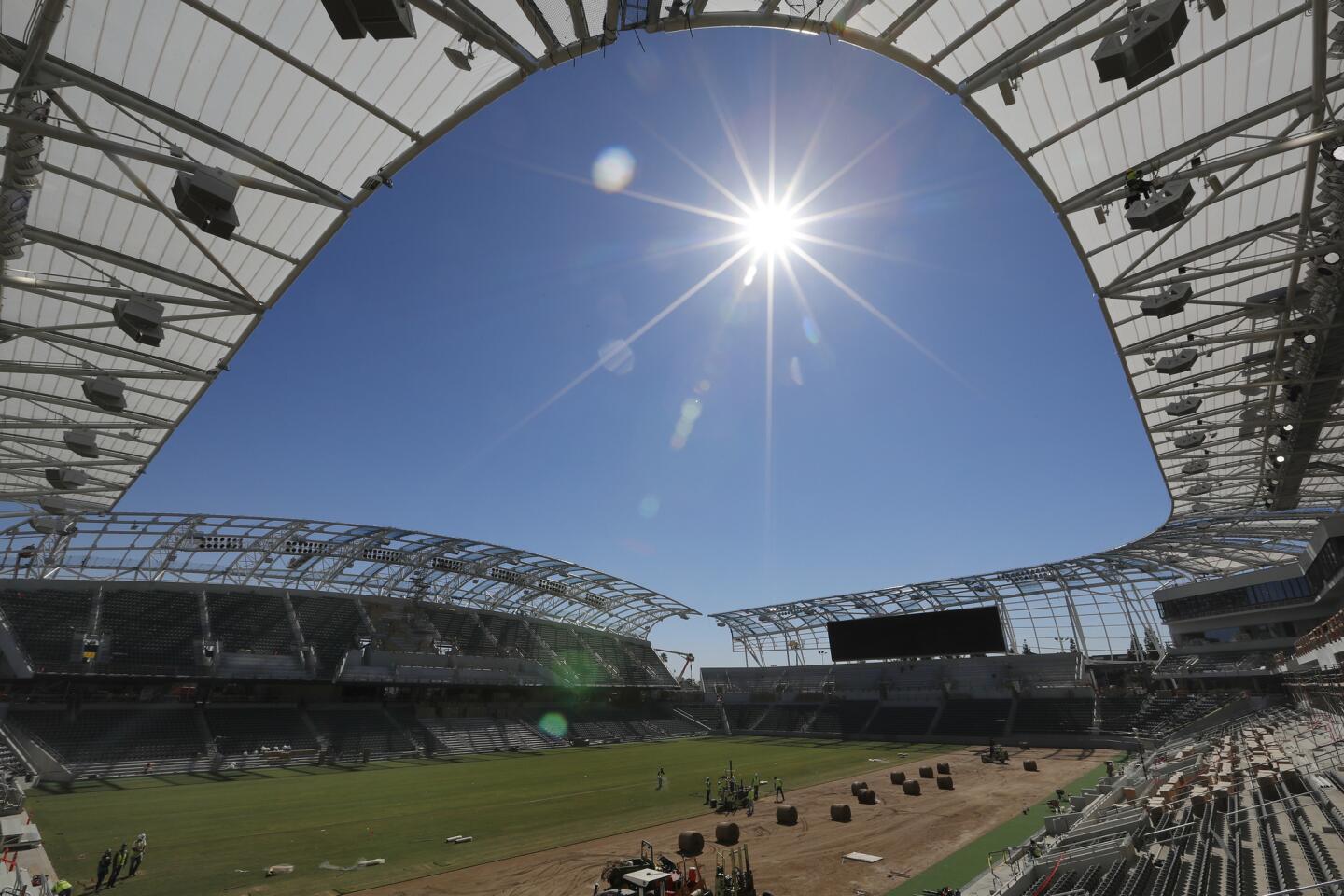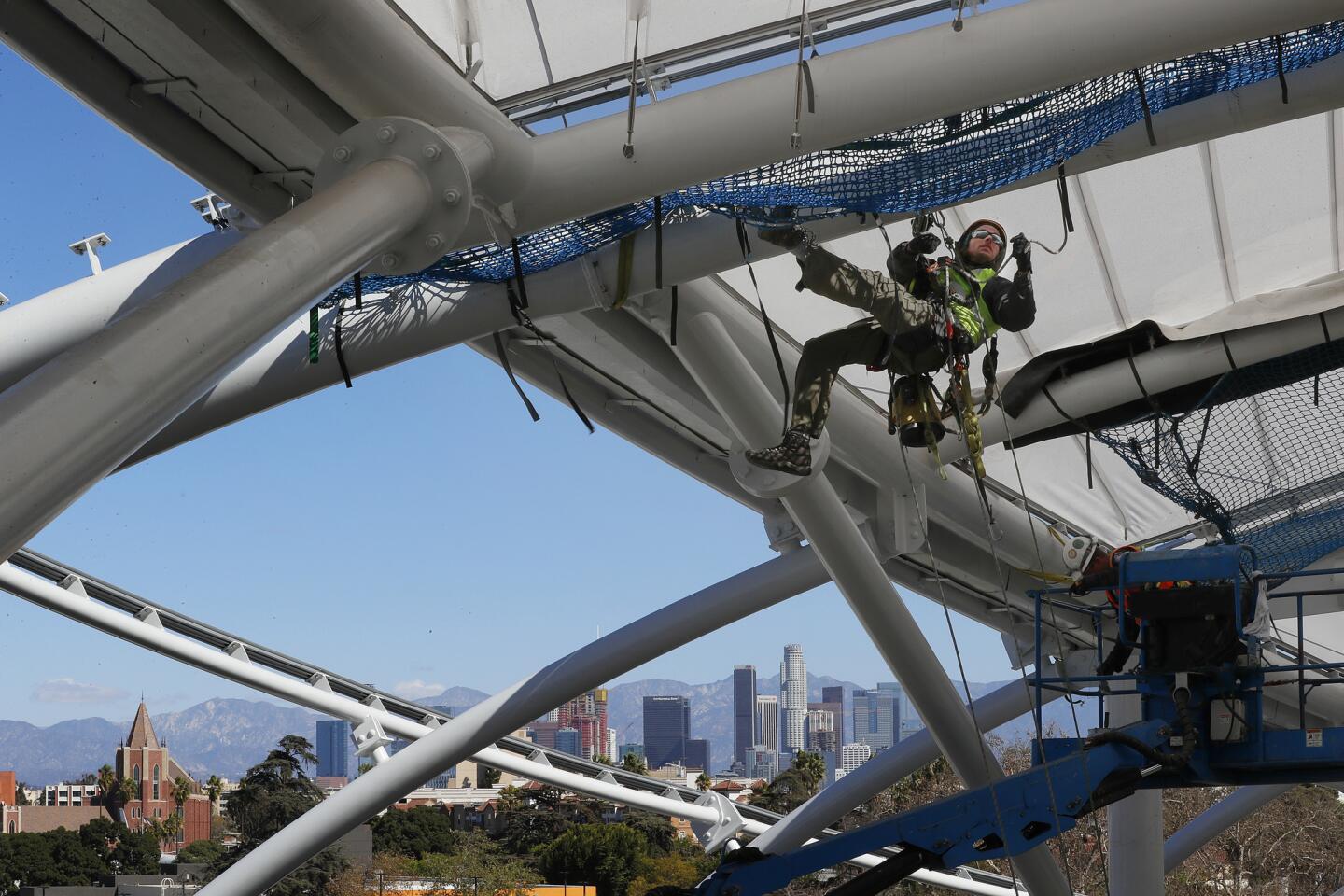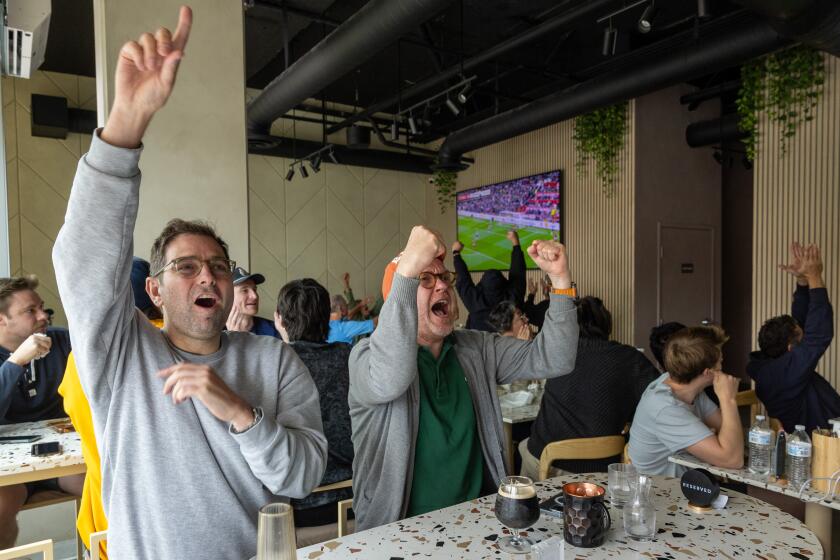Banc of California Stadium raising the bar for soccer-specific venues
When Dodger Stadium opened in the hills above Los Angeles in April 1962, it was so spectacular it was called the Taj Mahal of Baseball. And, just as with the original Taj Mahal, it turned out the architects forgot to include drinking fountains.
The oversight followed Dodger owner Walter O’Malley to his grave, earning mention in his obituary 17 years later.
So when Jonathan Emmett started sketching plans for the Los Angeles Football Club’s new home in Exposition Park, the first open-air professional sports venue to be built in Los Angeles since Dodger Stadium, he made sure not to repeat that mistake.
But Emmett, the design director for L.A.-based Gensler Sports, didn’t stop with the water fountains. Banc of California Stadium, where LAFC will play its first Major League Soccer home game Sunday, has the amenities that reflect the hefty price tag.
At $350 million, the privately financed 22,000-seat building is the most expensive soccer-specific stadium in U.S. history. And its completion, a month ahead of schedule, caps a wave of construction that has seen 18 of the 23 MLS teams either build, renovate or begin work on intimate soccer venues in the last 19 years.
“This is really going to set a new standard for the MLS,” Emmett said. “And a lot of this really comes from the building being built at this particular time in Los Angeles.”
LAFC coach Bob Bradley, a former U.S. national team coach who has managed nine teams on three continents, agrees.
“This stadium is up at the top with the best of the world,” he said.
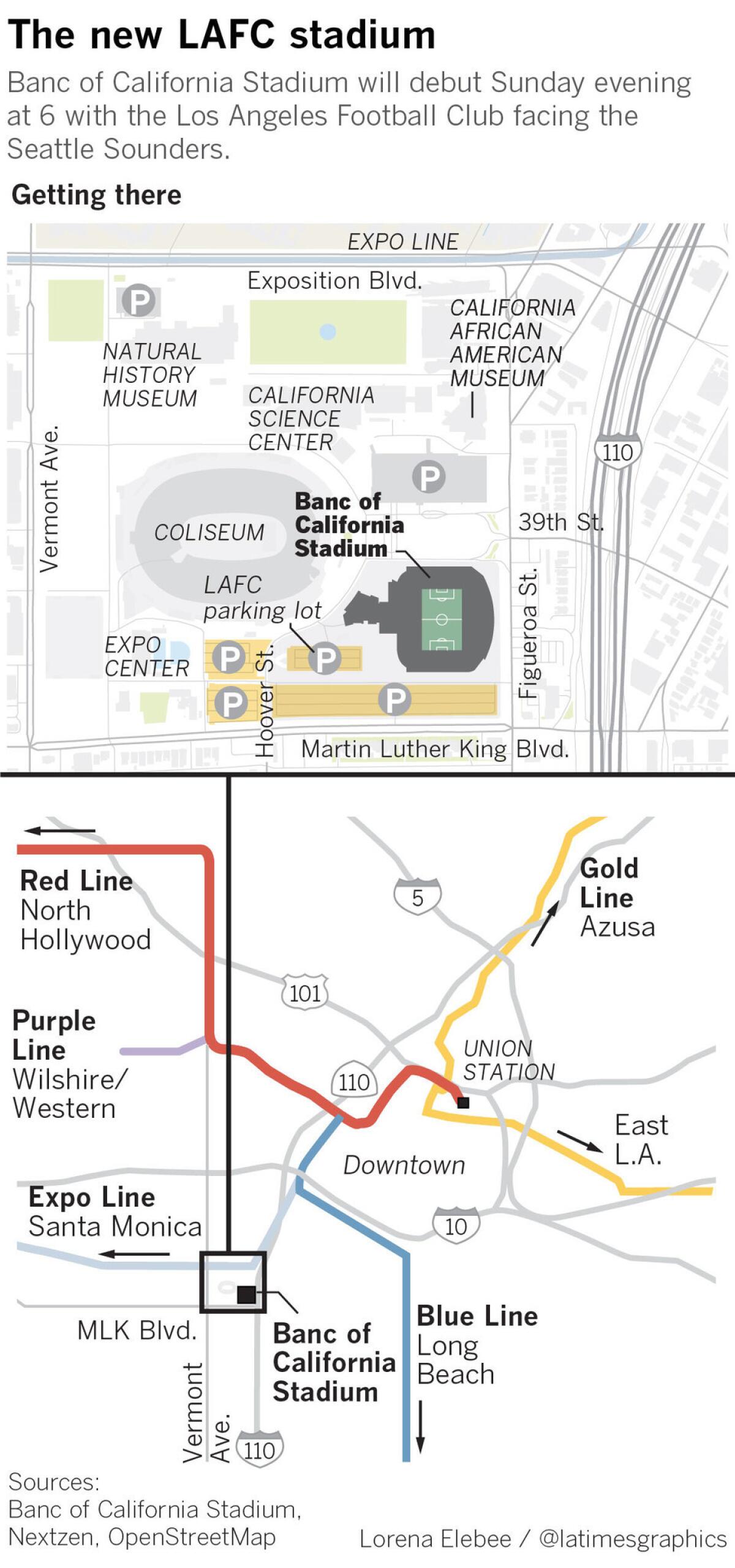
“All of us were just blown away,” he added of his staff and players. “The stadium is incredible. If they don’t enjoy this, a field like this, then they’re in the wrong business.”
The new stadium fulfills another goal the league has set: a push to build modern facilities in each team’s core neighborhoods.
“Years ago, we were just trying to build homes for our players,” said MLS Commissioner Don Garber. “The facility development has evolved along with the growth of Major League Soccer and our overall enterprise.
“I never would have dreamed that it would look like this or would have the amenities that it does. You have a very high-quality, expensive stadium delivered on time and on budget that’s also setting the bar for what we hope to see in new buildings.”
Built on the site of the L.A. Sports Arena in the southeast corner of Exposition Park between the Coliseum and the 110 Freeway, Banc of California Stadium went up in 20 months after the Sports Arena went down — although some behind-the-scenes detail work could continue for weeks after Sunday’s opening game.
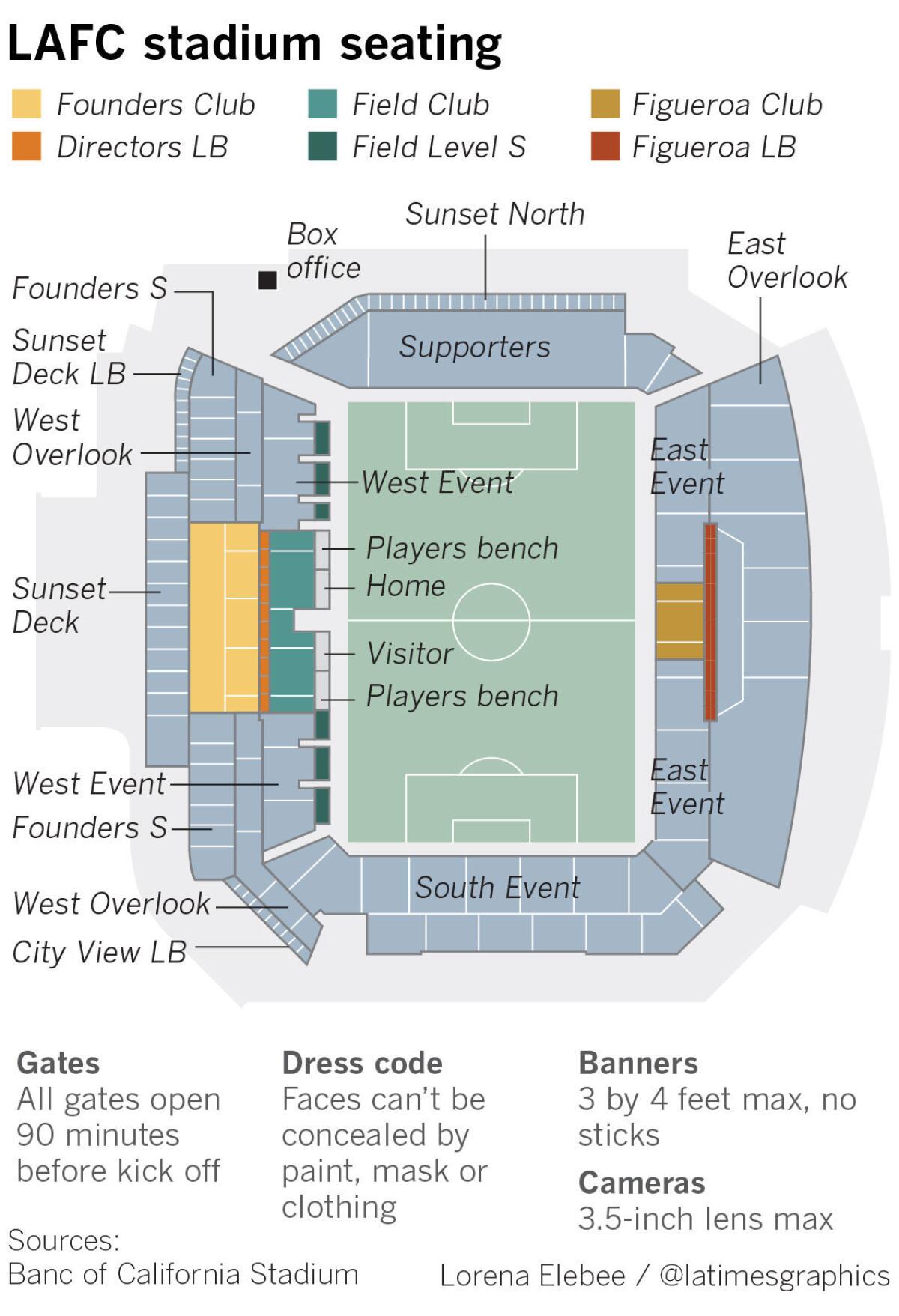
Emmett’s design dropped the field 22 feet below street level, reducing the scale of the venue while allowing fans to walk straight from the sidewalk onto the concourse. Once inside, the closest seats are 12 feet from the field — near enough to allow fans to rest their feet on the warmup area — while the farthest are within 135 feet of the sidelines.
And for fans who would rather not sit at all, there is the North End grandstand, where the seats fold up and lock beyond a rail to create a European-style standing area that angles up from the field at an imposing 34-degree slant.
Emmett designed that section, which has a capacity of 3,252, in concert with the team’s fans. Those fans later adopted the numbers 3252 as the name for the umbrella group representing all LAFC supporters.
“As a designer, that’s one of my favorite pieces of this because there’s such a great backstory behind it,” Emmett said. “It’s allowed for this building to be a venue that really becomes a home to the supporters as well as the team, because they played such a great role in helping to define the characteristics of it.”
The most visible element of the design are the canopies — made of a plastic-based, semi-translucent material — that cover each of the seating areas and are designed to keep the sun out and the noise in. But there are gaps between the sections that allow for views of the downtown skyline, the distant mountains and, to the west, the peristyle end of the Coliseum with its Olympic cauldron.
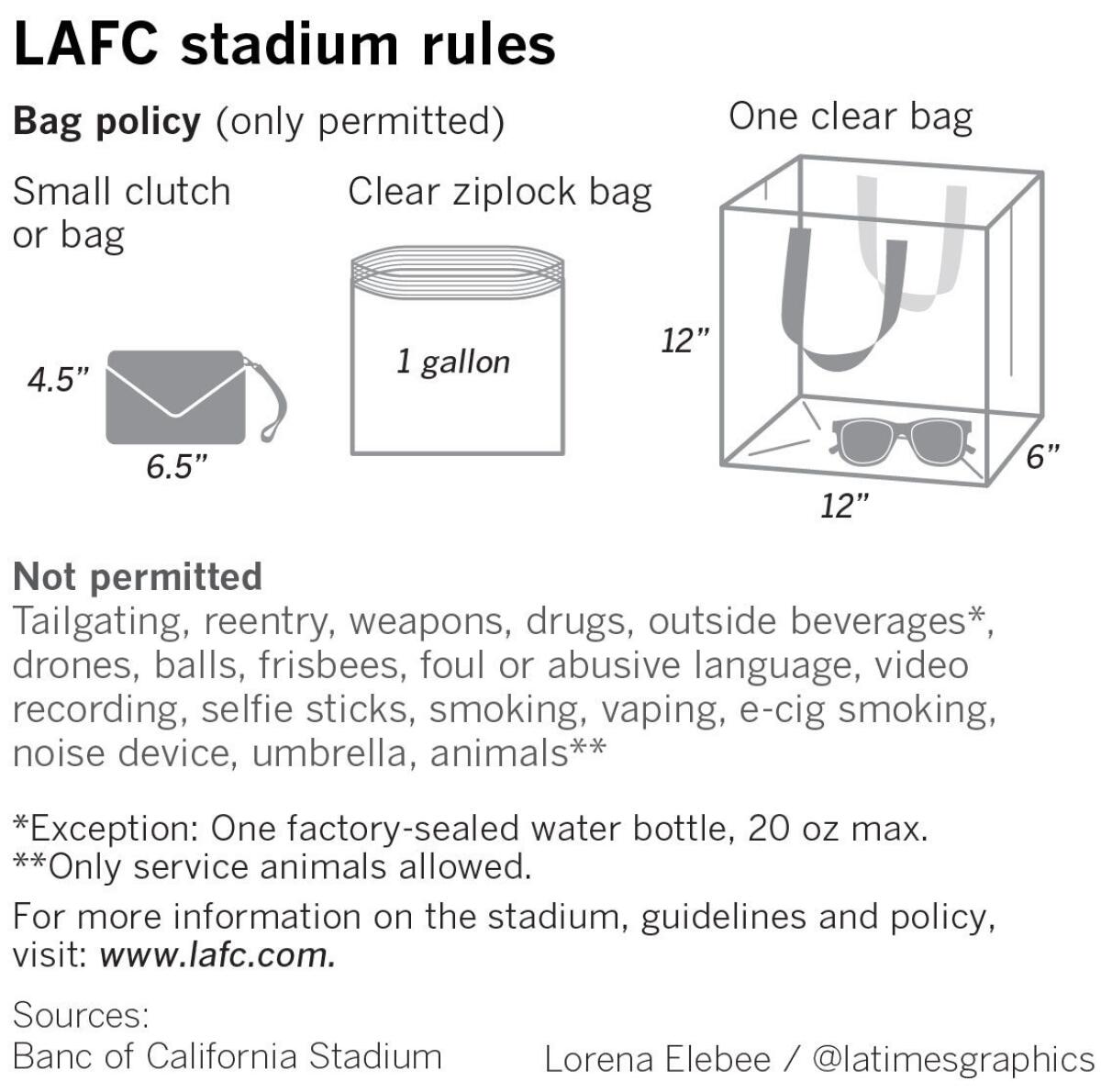
City views were something architects routinely blocked during previous waves of multipurpose stadium construction, which led to cookie-cutter ballparks in places such as Pittsburgh, Cincinnati, Philadelphia, St. Louis and San Francisco. Once you were inside, it was hard to remember which city you were in.
Emmett said the “framing views” he incorporated into Banc of California’s design are vital to the personality he and LAFC wanted at the stadium.
“We’re really tried to embody the vision set forth by the ownership group of being of Los Angeles and for Los Angeles,” he said. “It’s those little glimpses that tie this venue back to the city and really kind of create that very real and tangible connection back to the skyline that will help define the venue.”
Emmett said he feels the connection. Although he grew up watching and playing soccer in the United Kingdom, he’s lived in the U.S. for 23 years without supporting a local soccer team. That changed this year with his purchase of LAFC season tickets.
He’ll be sitting in those seats at Banc of California on Sunday watching — and listening — to see how the stadium is received.
“I’m hoping,” he said, fingers crossed. “They say it’s great.”
Follow Kevin Baxter on Twitter @kbaxter11
